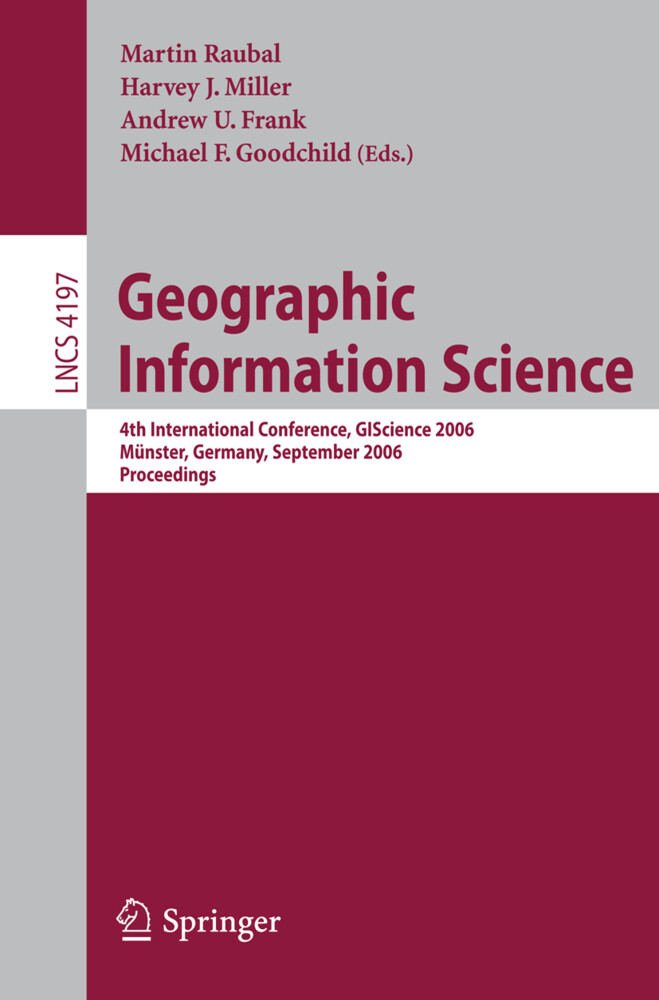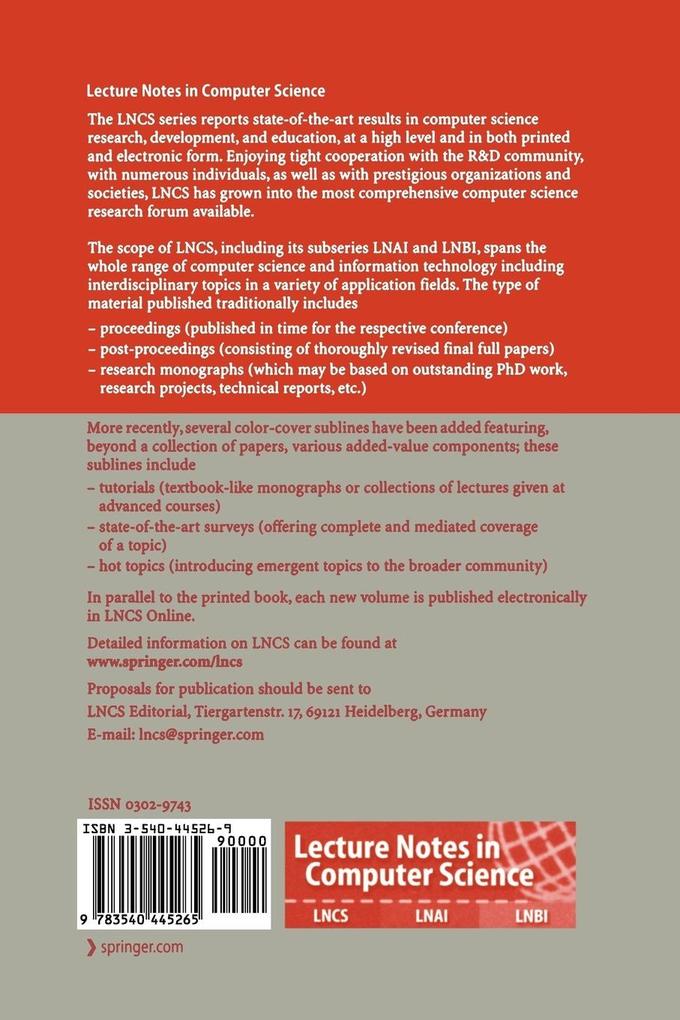
Zustellung: Mi, 16.07. - Fr, 18.07.
Versand in 2 Tagen
VersandkostenfreiBestellen & in Filiale abholen:
The GIScience conference series (www. giscience. org) was created as a forum for all researchers who are interested in advancing research in the fundam- tal aspects of geographic information science. Starting with GIScience 2000 in Savannah, Georgia, USA, the conferences have been held biennially, bringing together a highly interdisciplinary group of scientists from academia, industry, and governmentto analyze progressand to explore new researchdirections. The conferences focus on emerging topics and basic research ? ndings across all s- tors of geographic information science. After three highly successful conferences in the United States, this year's GIScience conference was held in Europe for the ? rst time. The GIScience conferences have been a meeting point for researchers coming from various disciplines, including cognitive science, computer science, engine- ing, geography, information science, mathematics, philosophy, psychology, social science, and statistics. The advancement of geographic information science - quiressuchinterdisciplinarybreadth, andthisisalsowhatmakestheconferences so exciting. In order to account for the di? erent needs of the involved scienti? c disciplines with regard to publishing their research results, we again organized two separate stages of paper submission: 93 full papers were each thoroughly reviewed by three Program Committee members and 26 were selected for p- sentation at the conference and inclusion in this volume. Then, 159 extended abstracts, describing work in progress, were screened by two Program Comm- tee members each. Subsequently, 42 of them were selected for oral presentation, and 46 for poster presentation at the conference.
Inhaltsverzeichnis
A Social and Spatial Network Approach to the Investigation of Research Communities over the World Wide Web. - Projective Relations in a 3D Environment. - A Multi-resolution Representation for Terrain Morphology. - A Spatiotemporal Model of Strategies and Counter Strategies for Location Privacy Protection. - Incorporating Landmarks with Quality Measures in Routing Procedures. - What Is the Region Occupied by a Set of Points? . - Voronoi Hierarchies. - Characterising Meanders Qualitatively. - Landmarks in OpenLS A Data Structure for Cognitive Ergonomic Route Directions. - Status Functions, Collective Intentionality: Matters of Trust for Geospatial Information Sharing. - Pattern Recognition in Road Networks on the Example of Circular Road Detection. - Implementing Anchoring. - Generating Raster DEM from Mass Points Via TIN Streaming. - Towards a Similarity-Based Identity Assumption Service for Historical Places. - Coupling Bayesian Networks with GIS-Based Cellular Automata for Modeling Land Use Change. - Orientation Calculi and Route Graphs: Towards Semantic Representations for Route Descriptions. - Incremental Rank Updates for Moving Query Points. - The Head-Body-Tail Intersection for Spatial Relations Between Directed Line Segments. - A GIS-Based Approach for Urban Multi-criteria Quasi Optimized Route Guidance by Considering Unspecified Site Satisfaction. - Ontological Analysis of Observations and Measurements. - Splitting the Linear Least Squares Problem for Precise Localization in Geosensor Networks. - The Spatial Dimensions of Multi-Criteria Evaluation Case Study of a Home Buyer s Spatial Decision Support System. - Graph-Based Navigation Strategies for Heterogeneous Spatial Data Sets. - Correlation Analysis of Discrete Motions. - Representing Topological Relationships for MovingObjects. - UMN-MapServer: A High-Performance, Interoperable, and Open Source Web Mapping and Geo-spatial Analysis System.
Produktdetails
Erscheinungsdatum
19. September 2006
Sprache
englisch
Auflage
2006
Seitenanzahl
440
Reihe
Lecture Notes in Computer Science
Herausgegeben von
Andrew U. Frank, Michael F. Goochild, Harvey J. Miller, Martin Raubal
Verlag/Hersteller
Produktart
kartoniert
Abbildungen
XIV, 422 p.
Gewicht
663 g
Größe (L/B/H)
235/155/24 mm
ISBN
9783540445265
Entdecken Sie mehr
Bewertungen
0 Bewertungen
Es wurden noch keine Bewertungen abgegeben. Schreiben Sie die erste Bewertung zu "Geographic Information Science" und helfen Sie damit anderen bei der Kaufentscheidung.










